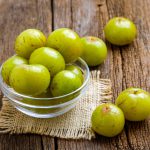Ashwagandha in Sanskrit means “smell of the horse” to correlate it with the strength of…
Read MoreLighting, camera angles, and photo editing tools might have us believe every promise that an anti-aging product makes. But it’s hard to ignore the soft lines on the corners of your lips, the gentle dip in the middle of your cheeks when you smile, and the shadows under your eyes. These telltale signs are entirely natural and visible reminders of the wisdom you’ve accumulated through life. And you can’t wipe them out entirely just as you can’t all the events that have transpired in your life.
As we hit our 30s we begin seeing the toll that sun damage and days of ignoring our skincare routine takes on us. Fine lines, loss of volume in cheeks, pigmentation marks, and dull skin begin to show up and stare back at us as we glance in the mirror. But there’s a lot more to aging than what meets the eye.
Although we tend to blame all signs of aging on either diet or sun exposure, there are two main processes at the helm of it all:
Intrinsic aging occurs as the years go by regardless of external influences. Lowered collagen production, loosened elastin fibers, and shrinking fat cells typically characterize this process. As we progress beyond our 30s, the transfer of moisture from the dermis to the epidermis slows down and sebaceous (oil) glands shrink in size. This is primarily the root cause for the skin to look dry and bruise easily.
Women also experience a decrease in estrogen when menopause sets in, which further dries out the skin.
Extrinsic aging is caused due to environmental factors like pollution, smoking, and sun exposure, all of which generate free radicals. These, in turn, accelerate skin aging by damaging skin proteins and reducing their elasticity. Additionally, free radical damage leads to thickening of the outermost layer of the epidermis, formation of freckles and sunspots, loss of collagen, and deepening of dark marks. This form of aging is what we’re most familiar with simply because it’s the only kind that we’ve any control over.
While intrinsic aging is inevitable and often permanent, the signs of extrinsic aging can be prevented and managed to a certain extent. Your best bets to do this are to
Scientific breakthroughs have allowed companies to formulate products that can also help stave off or slow down extrinsic aging. When a particular anti-aging product promises youthful skin, you know that it’s only targeting signs of extrinsic aging.[1]Why Does Your Skin Age? Dartmouth Undergraduate Journal Of Science.
If you look at aging from an ayurvedic perspective, you’d have to take into consideration ayurvedic body types, namely Vata, Pitta, and Kapha. Equally important is Prana, the life energy that dictates respiration, oxygenation, and circulation. Prana, in turn, governs two life essences, namely Ojas and Tejas.
An imbalance in Prana leads to kapha-related disorders while decreased Ojas results in vata-related disorders. Meanwhile, lack of Tejas leads to an obstruction in the flow of pranic energy. It’s vital to ensure that there is a balance amongst Prana, Ojas, and Tejas because they determine cellular health and longevity. Experts recommend proper diet, exercise, and lowered stress to ensure good skin and overall health.
Besides, Mamsadhara, the innermost layer of the skin, is known to provide the foundation for the skin’s stability and firmness. This layer is vital to understanding skin aging. As long as this layer is in balance, the skin continues to look young and supple. And so, any Ayurvedic skin product or ingredient you use to stave off aging usually nourishes this layer.
It’s also important to note that your body type will help determine what environmental factors your skin is most likely to get affected by.
That said, Ayurveda offers more than just insight into the process of aging, it comes armed with the knowledge for how you can combat it as well. One essential ingredient that comes highly recommended is Tulsi, (a.k.a Holy Basil) which has been found to have significant benefits towards preventing skin aging.
Named “the incomparable one” in Sanskrit, tulsi has a range of health benefits that make it an invaluable addition to one’s medicinal kit. In fact, amongst plants known for their medicinal value, all 13000 species of tulsi are hailed for their ability to aid in the healing of a range of ailments. This, in part, could be attributed to the phytochemicals in the plant, including oleanolic acid, rosmarinic acid, ursolic acid eugenol, linalool, carvacrol, β elemene, β caryophyllene, and germacrene.
Additionally, the stem and leaves of tulsi contain a range of biological components like saponins, flavonoids, triterpenoids, and tannins. All of these components combined have been found to have antioxidant and anti-inflammatory properties, two things that can do wonders for your skin.[3]Pattanayak, Priyabrata, Pritishova Behera, Debajyoti Das, and Sangram K. Panda. “Ocimum sanctum Linn. A reservoir plant for therapeutic applications: An overview.” Pharmacognosy reviews … Continue reading [4]Phytochemical analysis of medicinal herb (ocimum sanctum). International Journal of Nanomaterials, Nanotechnology and Nanomedicine. More specifically, studies have found that tulsi extract can improve hydration of the skin while reducing roughness and the appearance of wrinkles.[5]Borah, R., and S. P. Biswas. “Tulsi (Ocimum sanctum), excellent source of phytochemicals.” International Journal of Environment, Agriculture and Biotechnology 3, no. 5 (2018): 265258.
Holy basil is as close as we’re going to get when it comes to discovering the elixir of immortality. It has adaptogenic properties which refer to the ability to balance different processes in the body in order to help it adapt to stress.
Stress is at the helm of every problem that arises as we age, physical or mental. It needs to be addressed in order to achieve overall healing and balance in all bodily functions.
Adaptogens, like tulsi, reduce the intensity and impact of physical, emotional, and environmental stressors to promote wellbeing. It’s no surprise then that Ayurveda regards it as a herb of longevity.
In fact, different parts of holy basil have been used to treat everything from bronchitis, bronchial asthma, malaria, diarrhea, and dysentery to skin diseases, arthritis, painful eye diseases, chronic fever, and insect bites. This ability to adapt to stress, including oxidative stress, might be why tulsi is also known to have anticancer, antidiabetic, hepatoprotective, and cardioprotective, antimicrobial, and antifungal properties.[6]Kousik, Das Mahapatra, and Baldev Kumar. “A REVIEW ON THERAPEUTIC USES OF OCIMUM SANCTUM LINN (TULSI) WITH ITS PHARMACOLOGICAL ACTIONS.” International Journal of Research in Ayurveda … Continue reading [7]Pattanayak, Priyabrata, Pritishova Behera, Debajyoti Das, and Sangram K. Panda. “Ocimum sanctum Linn. A reservoir plant for therapeutic applications: An overview.” Pharmacognosy reviews … Continue reading
Of all the components of tulsi, ursolic acid, rosmarinic acid, and eugenol have been found to display the strongest antioxidant activity. In fact, they’ve been found to fight free radical damage that, as we’ve discussed above, have been linked to dullness and collagen loss. They might also lower inflammation.
Inflammation is often triggered by environmental stressors like UV radiation and has been found to lead to accelerated signs of premature aging. Tulsi can, hence, stave off fine lines, wrinkles, and saggy skin.
Ethanolic and rosmarinic properties, in particular, have been found to be responsible for biological activities that inhibit the degradation of hyaluronic acid. It is this component that gives skin its youthful suppleness and keeps it moisturized and healthy. These two properties also prevented the degradation of collagen fibers in studies, which could help keep skin looking brighter and more resistant to scars.
This could be why most cosmetics today are tapping into tulsi as a potential ingredient in their anti-aging formulations.[8]Chaiyana, Wantida, Songyot Anuchapreeda, Chanun Punyoyai, Waranya Neimkhum, Kuan-Han Lee, Wei-Chao Lin, Shang-Chian Lue, Helmut Viernstein, and Monika Mueller. “Ocimum sanctum Linn. as a … Continue reading
The more infections and bouts of acne breakouts your skin has to endure, the more likely it is to fall prey to premature aging. This is where the antimicrobial and anti-inflammatory properties of tulsi come in to save the day.
Eugenol and linoleic acid in this herb contain strong anti-inflammatory properties. In fact these have been found to be comparable to the action of even non-steroidal anti-inflammatory drugs. Both chronic and acute inflammation benefitted from the action of these properties. Besides, they’ve been found to stave off P. aeruginosa and E. coli, both of which are to blame for several skin and soft-tissue infections.
Tulsi essential oil in particular has been promoted as a good antimicrobial agent against skin infections.[9]Willcox, Merlin, Gerard Bodeker, Geneviève Bourdy, Vikas Dhingra, Jacques Falquet, Jorge FS Ferreira, Bertrand Graz et al. “Artemisia annua as a traditional herbal antimalarial.” … Continue reading
Skin aging isn’t the only thing some adults worry about. Adult acne, which leaves behind scars and dark marks can worsen the signs of aging or put extra stress on the skin to heal itself. It might also lead to collagen loss in specific areas. Oleanolic acid in tulsi has been found to reduce the production of excess sebum, which is linked to breakouts while also simultaneously reducing oxidative stress.
Some studies also link tulsi to reduced testosterone levels which is also notorious for triggering acne in adults. By keeping your skin free from breakouts and infections, tulsi might give it a good shot at healing and protecting itself from factors that cause aging.[10]Cohen, Marc Maurice. “Tulsi-Ocimum sanctum: A herb for all reasons.” Journal of Ayurveda and integrative medicine 5, no. 4 (2014): 251. [11]Yamani, Hanaa A., Edwin C. Pang, Nitin Mantri, and Margaret A. Deighton. “Antimicrobial activity of Tulsi (Ocimum tenuiflorum) essential oil and their major constituents against three species … Continue reading
Any studies that have looked into the potential side effects of this herb have given it a clean chit. There are minimal to no repercussions of including tulsi in your diet and only large amounts have been linked to transient, mild nausea.
While lack of evidence can’t guarantee the safety of tulsi, experts believe that generations of use without any serious long-term side effects is reason enough to rest assured about the safety of consuming it daily. [12]Jamshidi, Negar, and Marc M. Cohen. “The clinical efficacy and safety of Tulsi in humans: a systematic review of the literature.” Evidence-Based Complementary and Alternative Medicine … Continue reading [13]Jamshidi, Negar, and Marc M. Cohen. “The clinical efficacy and safety of Tulsi in humans: a systematic review of the literature.” Evidence-Based Complementary and Alternative Medicine … Continue reading Here are three ways you can go about it:
1. Make Tulsi Tea
Have this first thing in the morning to get your digestion going, hydrate your body, and reap all the benefits this herb has to offer.
2. Infuse Ghee With Tulsi
You could have this with rice, rotis, or consume a spoonful as is.
3. Juice Tulsi Leaves
You could also add tulsi to any other fruit juices you might be making.
Besides this, you could opt for creams containing tulsi to include in your skincare routine or add a bit of tulsi oil to your face masks.
Tulsi is perfectly safe to include in your everyday life. However, it never hurts to consult your doctor before you incorporate something new into your routine, especially if you suffer from chronic ailments or are pregnant.
References
| ↑1 | Why Does Your Skin Age? Dartmouth Undergraduate Journal Of Science. |
|---|---|
| ↑2 | Rao, Rammohan V. “Ayurveda and the science of aging.” Journal of Ayurveda and integrative medicine 9, no. 3 (2018): 225-232. |
| ↑3, ↑7 | Pattanayak, Priyabrata, Pritishova Behera, Debajyoti Das, and Sangram K. Panda. “Ocimum sanctum Linn. A reservoir plant for therapeutic applications: An overview.” Pharmacognosy reviews 4, no. 7 (2010): 95. |
| ↑4 | Phytochemical analysis of medicinal herb (ocimum sanctum). International Journal of Nanomaterials, Nanotechnology and Nanomedicine. |
| ↑5 | Borah, R., and S. P. Biswas. “Tulsi (Ocimum sanctum), excellent source of phytochemicals.” International Journal of Environment, Agriculture and Biotechnology 3, no. 5 (2018): 265258. |
| ↑6 | Kousik, Das Mahapatra, and Baldev Kumar. “A REVIEW ON THERAPEUTIC USES OF OCIMUM SANCTUM LINN (TULSI) WITH ITS PHARMACOLOGICAL ACTIONS.” International Journal of Research in Ayurveda & Pharmacy 3, no. 5 (2012). |
| ↑8 | Chaiyana, Wantida, Songyot Anuchapreeda, Chanun Punyoyai, Waranya Neimkhum, Kuan-Han Lee, Wei-Chao Lin, Shang-Chian Lue, Helmut Viernstein, and Monika Mueller. “Ocimum sanctum Linn. as a natural source of skin anti-ageing compounds.” Industrial Crops and Products 127 (2019): 217-224. |
| ↑9 | Willcox, Merlin, Gerard Bodeker, Geneviève Bourdy, Vikas Dhingra, Jacques Falquet, Jorge FS Ferreira, Bertrand Graz et al. “Artemisia annua as a traditional herbal antimalarial.” Traditional medicinal plants and malaria 4 (2004): 43-59. |
| ↑10 | Cohen, Marc Maurice. “Tulsi-Ocimum sanctum: A herb for all reasons.” Journal of Ayurveda and integrative medicine 5, no. 4 (2014): 251. |
| ↑11 | Yamani, Hanaa A., Edwin C. Pang, Nitin Mantri, and Margaret A. Deighton. “Antimicrobial activity of Tulsi (Ocimum tenuiflorum) essential oil and their major constituents against three species of bacteria.” Frontiers in microbiology 7 (2016): 681. |
| ↑12, ↑13 | Jamshidi, Negar, and Marc M. Cohen. “The clinical efficacy and safety of Tulsi in humans: a systematic review of the literature.” Evidence-Based Complementary and Alternative Medicine 2017 (2017). |


Dr. Aswathy has 10+ years of experience as an Ayurvedic consultant and medical officer in different nursing homes and hospitals. She has a deep knowledge of classical texts, Ayurvedic treatments, and Panchkarma. Dr. Aswathy is proficient in diagnosis through traditional Ayurvedic means and plans treatment that is specific to an individual’s constitution.

Ashwagandha in Sanskrit means “smell of the horse” to correlate it with the strength of…
Read More
Pimples - we’ve all had them and we all hate them. And if you’ve ever…
Read More
Don’t all of us want healthy glowing skin? And while there is a ton of…
Read More
Most of us have experienced skin irritations at some point or the other. When the…
Read More